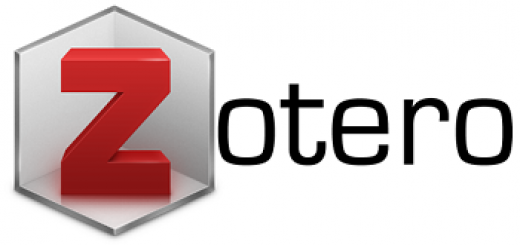Potret Metafora Konseptual dalam Album Lagu-Lagu Denny Caknan
DOI:
https://doi.org/10.17977/um064v2i52022p658-675Keywords:
metafora konseptual, skema citra, lirik lagu Denny CaknanAbstract
Abstract: Metaphor is the application of experience which is manifested in the form of linguistic expression. This study aims to identify the types of metaphors and image schemes. This research is supported by conceptual metaphor theory, semantic theory, and image schema theory. This study uses descriptive qualitative research methods with data collection techniques that refer to notes, namely (1) listening to songs, (2) recording song lyrics, (3) classifying songs in tabular form, and (4) presenting in the form of reports and results. Refer to note data collection techniques with data collection stages in the form of (1) listening to songs, (2) recording song lyrics, (3) classifying songs in tabular form, and (4) presenting in the form of reports and results. Data analysis was carried out by (1) data reduction, (2) data presentation, (3) data display, (4) conclusion. This research study uses an album of twenty songs from Denny Caknan which were popularized between 2017 and early 2021. This research shows that the process of metaphor influences the beauty of the message of meaning and dramatizes the story that is packaged in the form of a song. In this study it was also found that a person's circumstances can influence the process of creating music such as physical state, cognitive state, feeling state, and environmental conditions.
Keywords: conceptual metaphors, image schemes, song lyrics Denny Caknan
Abstrak: Metafora merupakan pengaplikasian pengalaman yang diwujudkan dalam bentuk ekspresi linguistik. Penelitian ini bertujuan untuk mengidentifikasi jenis metafora dan skema citra. Penelitian ini didukung oleh teori metafora konseptual, teori semantik, dan teori skema citra. Penelitian ini menggunakan metode penelitian deskriptif kualitatif dengan teknik pengumpulan data simak catat yakni (1) mendengarkan lagu, (2) mencatat lirik lagu, (3)mengklasifikasikan lagu dalam bentuk tabel, dan (4) menyajikan dalam bentuk laporan dan hasil. Teknik pengumpulan data simak catat dengan tahap pengumpulan data berupa (1) mendengarkan lagu, (2) mencatat lirik lagu, (3) mengklasifikasikan lagu dalam bentuk tabel, dan (4) menyajikan dalam bentuk laporan dan hasil. Analisis data dilakukan dengan (1) reduksi data, (2) penyajian data, (3) display data, (4) kesimpulan. Kajian penelitian menggunakan album lagu-lagu Denny Caknan berjumlah dua puluh lagu yang dipopulerkan antara tahun 2017 hingga awal tahun 2021. Penelitian ini menghasilkan bahwa proses metafora memberikan pengaruh terhadap keindahan pesan makna serta mendramatiskan cerita yang dikemas dalam bentuk lagu. Pada penelitian ini juga ditemukan bahwa keadaan seseorang dapat berpengaruh dalam proses penciptaan musik seperti keadaan fisik, keadaan kognitif, keadaan perasaan, dan keadaan lingkungan.
Kata Kunci: metafora konseptual, skema citra, lirik lagu Denny Caknan
References
Chaer, A. (2009). Pengantar semantik bahasa Indonesia. Jakarta: Rineka Cipta.
Cienki, A., & Müller, C. (2008). Metaphor, gesture, and thought. In R. W. Gibbs, Jr. (Ed.), The Cambridge handbook of metaphor and thought (pp. 483–501). Cambridge: Cambridge University Press. doi: https://doi.org/10.1017/CBO9780511816802.029
Clausner, T., & Croft, W. B. (1999). Domains and image schemas. Cognitive Linguistics, 10(1), 1–31. doi: https://doi.org/10.1515/cogl.1999.001
Cruse, D. A., & Croft, W. (2004). Cognitive linguistics. Cambridge: Cambridge University Press.
Dewi, N. L. P. S. (2018). Metaphors of life in Bhagavad Gita as it is. Humanis, 22(2), 503–508. doi: https://doi.org/10.24843/JH.2018.v22.i02.p32
Djajasudarma, T. F. (2012). Semantik 1: Makna leksikal dan gramatikal. Bandung: Refika Aditama.
Evans, V., & Green, M. (2006). Cognitive linguistics: An introduction. Edinburgh: Edinburgh University Press.
Gibbs, R. W., & Colston, H. L. (1995). The cognitive psychological reality of image schemas and their transformations. Cognitive Linguistics, 6(4), 347–378. doi: 10.1515/cogl.1995.6.4.347
Kövecses, Z. (2010a). Metaphor, language, and culture. DELTA: Documentação de Estudos em Lingüística Teórica e Aplicada, 26, 739–757. doi: doi.org/10.1590/S0102-44502010000300017
Kövecses, Z. (2010b). Metaphor and culture. Acta Universitatis Sapientiae, Philologica, 2(2), 197–220. doi: 10.1093/acprof:oso/9780190224868.003.0005
Kövecses, Z. (2000). Metaphor and emotion. New York: Cambridge University Press.
Kurniawati, Tallapessy, A., & Diana, S. (2014). A study of conceptual metaphor in Suzanne Collin’s The Hunger Games. Publika Budaya, 3(2), 73–77. Retrieved from https://www.neliti.com/publications/191224/a-study-of-conceptual-metaphor-in-suzanne-collins-the-hunger-games-sebuah-kajian#cite
Lakoff, G., & Johnson, M. (1980). Metaphors we live by. Chicago: University of Chicago Press.
Lakoff, G., & Johnson, M. (2003). Metaphors we live by (with a new afterword). London: University of Chicago Press.
Musolff, A., & Zinken, J. (2009). Metaphor and discourse. London: Palgrave Macmillan.
Rahardian, E. (2017). Metafora emosi dalam tuturan bahasa Jawa (Unpublished master’s thesis, Universitas Diponegoro, Semarang). Retrieved from http://eprints.undip.ac.id/51887/
Rashidin, R., & Jalaluddin, N. H. (2015). Metafora konsepsi marah dalam data korpus teks tradisional Melayu. SliK2015: Seminar Linguistik Kebangsaan, 243–258.
Sugiyono. (2013). Metode penelitian kuantitatif kualitatif dan R&D. Bandung: Alfabeta.
Suharsaputra, U. (2012). Metode penelitian kuantitatif, kualitatif, dan tindakan. Bandung: Refika Aditama.
Ullmann, S. (2014). Pengantar Semantik (adapted by Sumarsono). Yogyakarta: Pustaka Pelajar.
Downloads
Published
How to Cite
Issue
Section
License
Copyright (c) 2022 Vivi Azlinda, Anang Santoso, Novi Eka Susilowati

This work is licensed under a Creative Commons Attribution-ShareAlike 4.0 International License.





























